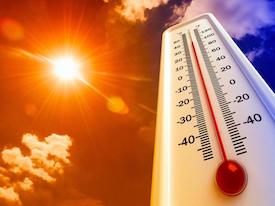Temperatures across the US have been brutal this spring and into the beginning of summer spiking into the 100’s. The quick onset of high temps causes many workers to become ill. The body needs to gradually acclimate to working in hot environments. Lack of acclimatization can be a major risk factor for heat related fatalities. Protecting workers from heat stress should be the top priority when working in hot environments.
RISK FACTORS
- High temperatures and humidity, direct sun exposure, no breeze or wind.
- Heavy physical labor.
- Lack of acclimatization.
- Lack of hydration.
- Heavy clothing.
- Medical conditions and physical health.
types of Heat illnesses
Heat illnesses can be life threatening for workers exposed to working outdoors and indoors. Heat stroke, heat exhaustion, heat cramps and heat rash are all examples of heat related illnesses.
Symptoms of heat exhaustion may include headache, dizziness, fainting, weakness and wet skin, irritability or confusion, thirst, nausea, or vomiting. Someone experiencing heat stroke may be unconscious, confused, disoriented, or having slurred speech. Cool these workers immediately and call 911!
PREVENT heat stress
Heat stress is preventable.
- Stay Hydrated.
- Know the signs and symptoms for heat illnesses. Monitor yourself.
- Block out direct sun and other heat sources. Provide shade.
- Wear lightweight, light-colored loose-fitting clothing.
- Take short breaks to get out of the sun or away from heat sources.
PROTECT workers
Protect workers from heat stress by properly training employees on the signs, symptoms, and treatment for heat illnesses, provide water/hydration stations, provide shade and rest breaks, implement engineering controls, such as fans, and allow workers to acclimate to working in the heat. Workers should use a buddy system when working in hot environments and not be afraid to admit when they are having symptoms of heat illnesses.
OSHA’s Heat Illness Prevention campaign comes down to three key words: Water. Rest. Shade.
Click here for the OSHA Heat Stress Quick Card
Check out more information on how OECS can help with your safety needs!
Submitted by Melissa A Olheiser, OECS
 763.417.9599
763.417.9599
